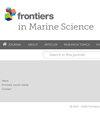加深对沉船生态学的理解:对10个马耳他沉船地点海洋沉积物微生物群的比较研究
IF 3
2区 生物学
Q1 MARINE & FRESHWATER BIOLOGY
引用次数: 0
摘要
历史沉船对海洋环境的人为影响在很大程度上仍未被描述,特别是对于位于~50米深处并在80多年前消失的沉船。在50米以下,海洋环境从深光带过渡到中光带,在这里,光的减少、氧水平的显著变化和压力的增加可能改变微生物群落和代谢途径。了解这些变化可以为微生物的适应和进化提供见解。一组潜水员从马耳他海岸附近的9个沉船地点收集了沉积物样本,这些地点的深度从5米到100米不等。所有取样都是在马耳他政府的同意和授权下进行的,目的是收集海洋遗传资源。采用化学分析和元条形码技术评估沉船对周围沉积物中微生物多样性和群落组成的影响。在沉船附近的沉积物中,微生物群落的α (α)多样性高于距离沉船地点100米以外的沉积物。在所有9个沉船地点中,沉积物大小是微生物多样性的最重要驱动因素,其次是框架类型和漏油的存在。该研究表明,沉船的深度、框架类型和原产国不同,显著影响其周围环境的微生物生态系统和沉积物化学。研究结果表明,沉船是生态和化学变化的焦点,有助于历史文物和海洋生态系统之间的动态相互作用。本文章由计算机程序翻译,如有差异,请以英文原文为准。
Deepening the understanding of wreck ecology: a comparative study of marine sediment microbiomes across 10 Maltese wreck sites
The anthropogenic influences of historical shipwrecks on the marine environment remain largely uncharacterized, particularly for wrecks located at depths of ~50 meters and lost over 80 years ago. Below 50 meters, the marine environment transitions from the euphotic to the mesophotic zone, where reduced light, significant changes in oxygen levels, and increased pressure may alter microbial communities and metabolic pathways. Understanding these shifts can provide insights into the adaptation and evolution of microorganisms. Sediment samples were collected by a team of divers from nine wreck sites off the coast of Malta, varying in depth from 5 to 100 meters. All sampling was conducted with the consent and authorization of the Government of Malta for the collection of marine genetic resources. Chemical analyses and metabarcoding techniques were employed to assess how shipwrecks influence microbial diversity and community composition in the surrounding sediments. Alpha (α ) diversity of microbial communities was higher in sediments adjacent to the shipwrecks compared to those collected over 100 meters away from any wreck site. Across all nine wreck sites, sediment size emerged as the most significant driver of microbial diversity, followed by frame type and the presence of oil leaks. This study demonstrates that shipwrecks, varying in depth, frame type, and country of origin, significantly influence the microbial ecosystems and sediment chemistry of their surrounding environment. The findings suggest that shipwrecks act as focal points for ecological and chemical changes, contributing to the dynamic interactions between historical artifacts and marine ecosystems.
求助全文
通过发布文献求助,成功后即可免费获取论文全文。
去求助
来源期刊

Frontiers in Marine Science
Agricultural and Biological Sciences-Aquatic Science
CiteScore
5.10
自引率
16.20%
发文量
2443
审稿时长
14 weeks
期刊介绍:
Frontiers in Marine Science publishes rigorously peer-reviewed research that advances our understanding of all aspects of the environment, biology, ecosystem functioning and human interactions with the oceans. Field Chief Editor Carlos M. Duarte at King Abdullah University of Science and Technology Thuwal is supported by an outstanding Editorial Board of international researchers. This multidisciplinary open-access journal is at the forefront of disseminating and communicating scientific knowledge and impactful discoveries to researchers, academics, policy makers and the public worldwide.
With the human population predicted to reach 9 billion people by 2050, it is clear that traditional land resources will not suffice to meet the demand for food or energy, required to support high-quality livelihoods. As a result, the oceans are emerging as a source of untapped assets, with new innovative industries, such as aquaculture, marine biotechnology, marine energy and deep-sea mining growing rapidly under a new era characterized by rapid growth of a blue, ocean-based economy. The sustainability of the blue economy is closely dependent on our knowledge about how to mitigate the impacts of the multiple pressures on the ocean ecosystem associated with the increased scale and diversification of industry operations in the ocean and global human pressures on the environment. Therefore, Frontiers in Marine Science particularly welcomes the communication of research outcomes addressing ocean-based solutions for the emerging challenges, including improved forecasting and observational capacities, understanding biodiversity and ecosystem problems, locally and globally, effective management strategies to maintain ocean health, and an improved capacity to sustainably derive resources from the oceans.
 求助内容:
求助内容: 应助结果提醒方式:
应助结果提醒方式:


